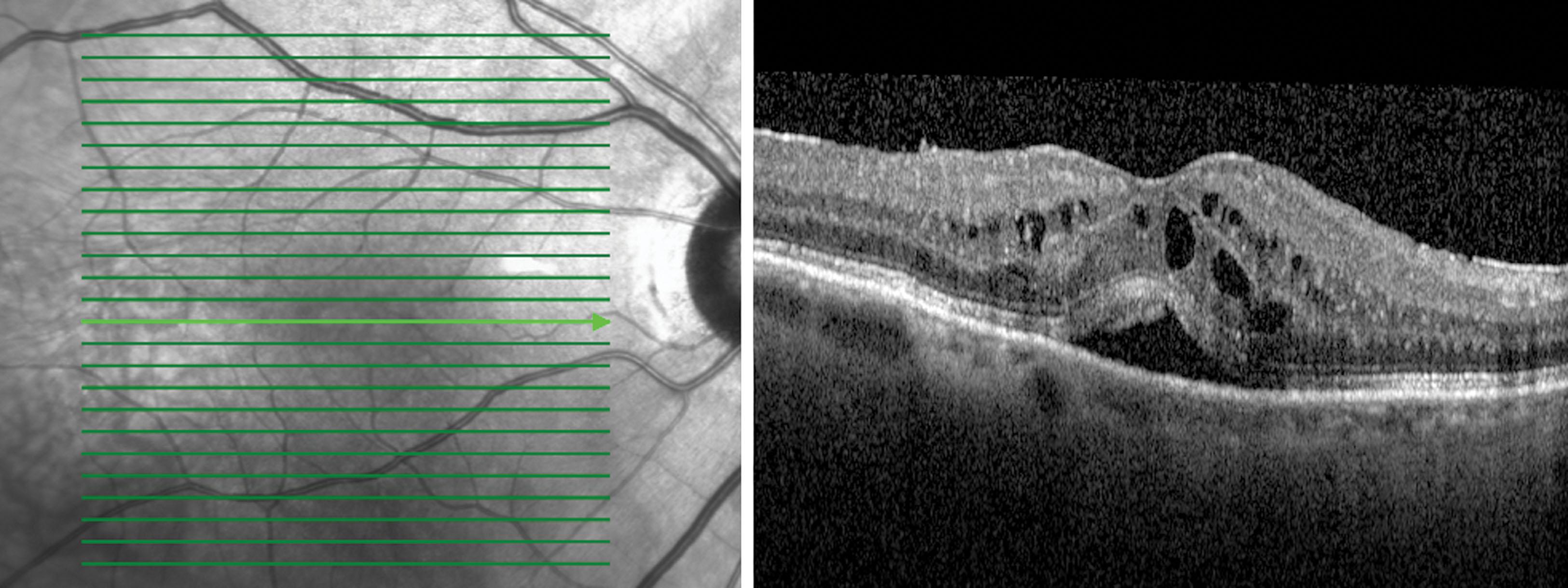Physical Address
304 North Cardinal St.
Dorchester Center, MA 02124
It is important for the cataract surgeon to assess for preoperative and intraoperative risk factors for retinal complications.
The anterior segment surgeon can take several key steps during and after surgery to maximize visual outcomes despite the occurrence of a retinal complication.
Prompt diagnosis and management, usually in conjunction with a retinal specialist, is essential.
Cataract surgery may have complications. Although the evolution of surgical techniques, including clear corneal incisions along with phacoemulsification, has increased the efficiency and lowered the ocular trauma associated with cataract surgery, the surgeon must be aware of the acute and late complications of cataract surgery that may affect the vitreous and retina. Although these retinal complications are infrequent, timely management in conjunction with a retinal specialist is crucial to maximizing visual outcomes. The most common complications are discussed in this chapter.
Cystoid macular edema (CME) is the most common cause of visual loss after cataract surgery. This entity, also referred to as Irvine-Gass Syndrome, was first described by Irvine in 1953, and the fluorescein findings were later detailed by Gass. The incidence of CME varies; however, it is much lower since the advent of phacoemulsification and small-incision cataract surgery. Clinically significant macular edema affects anywhere from 0.1% to 11% of eyes after uneventful cataract surgery. The incidence as measured by optical coherence tomography—the most sensitive modality for detecting macular edema—may be as high as 30% to 41%.
The pathogenesis of pseudophakic CME is multifactorial. Inflammatory mediators are upregulated in both the aqueous and vitreous after surgery. The increased inflammation leads to the breakdown of the blood-retinal barrier and increased vascular permeability. This increased permeability, in turn, contributes to fluid accumulation within the retina. Macular edema occurs about 4 to 12 weeks after surgery, reaching a peak incidence at about 4 to 6 weeks postoperatively. In cases of clinically significant CME, patients present with blurry vision, metamorphopsia, or central scotoma. The funduscopic exam will reveal retinal thickening and loss of the foveal depression. Severe cases may appear to have pseudohole formation.
Vitreous loss
Retained lens fragments/vitrectomy
Iris trauma
Posterior capsular rupture
Intraocular lens dislocation
Anterior chamber intraocular lens or iris fixated lenses
History of previous treatment for diabetic macular edema
Previous history of epiretinal membrane, uveitis, retinal vein occlusion, diabetic retinopathy, and retinal detachment repair
Optical coherence tomography demonstrates ( Fig. 52.1 ) the following:
Loss of foveal depression
Retinal thickening
Cystic hyporeflective spaces within the macula in the outer plexiform and inner nuclear layers
Subretinal fluid (severe cases)
Fluorescein angiography demonstrates ( Fig. 52.2 ) the following:

Leakage from perifoveal capillaries (early frames)
Classic “petaloid” pattern of leakage (late frames)
Optic nerve leakage is commonly seen and helps distinguish from other etiologies such as diabetic macular edema

To reduce the risk for postoperative CME, all preexisting retinal conditions should be controlled before cataract surgery. Eyes with diabetic retinopathy should be evaluated and treated as appropriate. For uveitis, the general recommendation is adequate control of intraocular inflammation for at least 3 months before cataract surgery.
Topical nonsteroidal antiinflammatory drugs (NSAIDs) are the mainstay of perioperative prophylaxis. NSAIDs are potent inhibitors of prostaglandins, one of the key mediators in the development of CME. These medications are approved for the treatment of postoperative inflammation and are commonly used off-label for prophylaxis against pseudophakic CME. Several studies have demonstrated the efficacy of NSAIDs in preventing pseudophakic CME.
The more commonly used NSAIDs are as follows:
Ketorolac 0.4% (Acular, Allergan, Irvine, CA)
Diclofenac 0.1% (Voltaren, Bausch & Lomb, Tampa, FL)
Bromfenac 0.09% (Xibrom/Bromday, Ista Pharmaceuticals, Irvine, CA)
Nepafenac 0.1% (Nevanac, Alcon, Fort Worth, TX)
Combination use of topical corticosteroids along with NSAIDs is the most frequently used treatment for pseudophakic CME. Data suggest that the medications work synergistically, and studies report superior visual acuity outcomes when combination therapy is compared with monotherapy treatment with either agent. A small, randomized control trial showed 3.8 lines improvement in Snellen visual acuity with combination treatment with prednisolone and ketorolac compared with only 1.1 to 1.6 lines with prednisolone or ketorolac alone.
Periocular corticosteroids may be given sub-Tenon’s, subconjunctival, or intravitreal for CME that is refractory to topical therapy. Similarly, drug delivery systems, such as the dexamethasone implant (Ozurdex, Allergan, Irvine, CA) and the fluocinolone acetonide implant (Retisert, Bausch + Lomb, Quebec, Canada), may be used in refractory and recurrent cases. Side effects of periocular and intravitreal corticosteroids include elevated intraocular pressure, so use should be carefully considered in eyes with ocular hypertension or glaucoma.
Antivascular endothelial growth factor (anti-VEGF) intravitreal injections have been used in patients with chronic pseudophakic CME refractory to other treatments. Vascular endothelial growth factor is well-known as a key mediator of angiogenesis, but in cases of macular edema it may be upregulated in the midst of increased inflammation and lead to the increased vascular permeability causing CME. A multicenter retrospective study showed 72% of eyes with refractory CME treated with intravitreal bevacizumab showed improvement in visual acuity and central macular thickness at 1 year.
If medical therapy with both topical and injectable treatments is ineffective, surgical intervention may be considered. Nd:YAG vitreolysis is used when abnormal vitreous adhesions or incarcerations at the cataract incisions may be contributing via vitreous traction. Pars plana vitrectomy may be considered if there is vitreomacular traction or a significant epiretinal membrane.
Become a Clinical Tree membership for Full access and enjoy Unlimited articles
If you are a member. Log in here